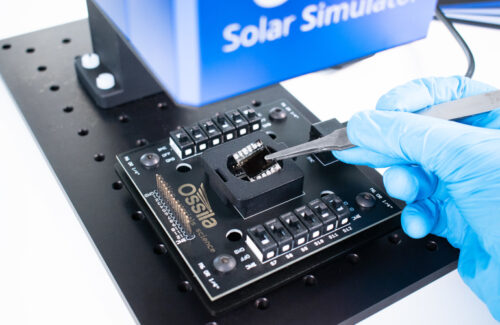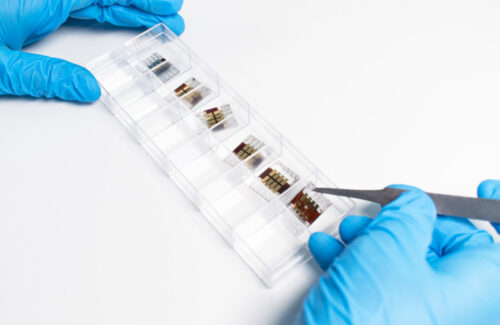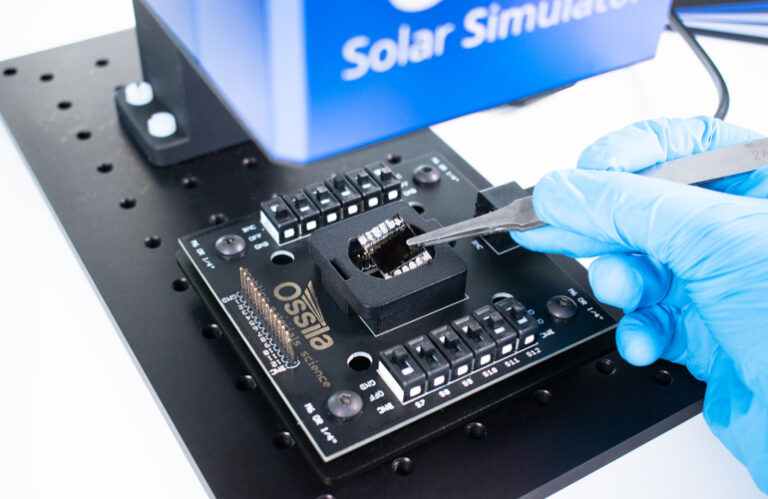The race for higher efficiency in solar cells has captured the imagination of researchers, investors and the general public. Record-breaking efficiencies promise more energy from smaller and cheaper solar panels. Perovskite solar cells were realized in just 15 years high efficiency over 25% – it took 37 years to achieve comparable efficiency with popular crystalline silicon solar cells. Meanwhile, tandem cells easily break the 30% efficiency barrier, with perovskite-silicon structures reaching 33.9% in 2023.
However, there is another crucial aspect of solar technology: stability. While efficiency is an important factor, stability ultimately determines its impact in the real world. For emerging technologies such as perovskites and organic solar photovoltaics, the challenge of maintaining performance over time under real-world conditions is a much greater barrier to adoption than achieving maximum efficiency in a laboratory.
The problem with stability in emerging technologies
 Emerging solar technologies, while promising, are less stable than traditional silicon-based systems. This instability is rooted in the properties of the materials themselves and their sensitivity to environmental factors.
Emerging solar technologies, while promising, are less stable than traditional silicon-based systems. This instability is rooted in the properties of the materials themselves and their sensitivity to environmental factors.
- Perovskite solar cells are known for their high efficiency and low production costs, but they deteriorate quickly when exposed to heat, humidity and UV light. These factors are unavoidable in outdoor environments.
- Organic solar photovoltaics (OPVs) They are flexible, lightweight solar cells that face problems with moisture and oxygen ingress, causing performance to decline over time.
- Thin films of cadmium telluride are more durable than some next-generation materials, but can still suffer from defects introduced during production. These defects can compromise long-term stability.
The main problem is that although these materials perform exceptionally well for short periods of time in controlled laboratory environments such as a glove boxtheir behavior under real circumstances often falls short. Factors such as temperature fluctuations, pollution, mechanical stress and exposure to elements can accelerate degradation, shortening the effective lifespan of these solar cells.
Why stability is more important than efficiency
 High-efficiency solar cells generate excitement and investment, but without stability their potential impact is limited. Solar panels that degrade quickly will produce significantly less energy over their lifetime, regardless of the high efficiency achieved in the laboratory. If they do not demonstrate reliability when introducing new technologies, they will struggle to gain the trust of investors, regulators and consumers. Stability is a key factor in building credibility for new materials and designs.
High-efficiency solar cells generate excitement and investment, but without stability their potential impact is limited. Solar panels that degrade quickly will produce significantly less energy over their lifetime, regardless of the high efficiency achieved in the laboratory. If they do not demonstrate reliability when introducing new technologies, they will struggle to gain the trust of investors, regulators and consumers. Stability is a key factor in building credibility for new materials and designs.
Solar panels are a long-term investment for both residential and commercial installations. Frequent replacements or repairs due to instability increase the total cost of ownership, making solar energy less attractive to consumers and businesses. Instability also has consequences for large-scale solar farms, where replacing many solar panels becomes a logistical and financial challenge.
Short-lived panels also contribute to the growing problem of solar energy waste. As installations expand worldwide, ensuring sustainability can help minimize the carbon footprint of solar technology. In this sense, stability aligns with the sustainability ethos of renewable energy by reducing resource consumption over time. In addition, the degradation of some new solar materials can be dangerous. Perovskite solar cells contain lead-halide complexes that dissolve in water. Without proper encapsulation there is a risk of them poisoning the local environment.
Reformulation of the sector’s priorities
The solar industry’s obsession with efficiency is understandable. Efficiency metrics are easy to communicate, resonate with consumers and build scientific awareness. However, for solar energy to become a truly transformative force in the global energy landscape, sustainability must be central.
- Shift the research focus: Academic and industrial researchers must devote more resources to studying degradation mechanisms and developing sustainable materials.
- Encourage stability: Governments and funding agencies can encourage stability research by linking incentives to long-term performance measures, rather than just peak efficiency.
- Inform stakeholders: Manufacturers and installers should emphasize stability for consumers, highlighting the long-term benefits of sustainable solar technologies.
- Collaboration within the sector: Researchers, policymakers and manufacturers must work together to establish robust standards and share data on durability testing.
Efficiency attracts attention, but stability creates impact. For next-generation solar cells to become widely used, they must prove they can perform consistently under real-world conditions for decades. By prioritizing stability in research, production and policy, the solar industry can create technologies that are not only high-performing but also reliable and sustainable. This shift in focus will lay the foundation for a more resilient and impactful renewable energy future, ensuring solar continues to play a leading role in the global energy transition.
Innovations that address stability issues
The good news is that researchers and industry leaders are already actively addressing stability issues in the next generation of solar cells, with progress being made in several key areas.
Materials engineering
Advances in protective coatings and encapsulation technologies protect sensitive materials such as perovskites and OPVs from environmental stressors. These barriers prevent moisture, oxygen and UV light from reaching the active layers of the cells. Furthermore, a significant portion of perovskite and organic photovoltaic research has been devoted to finding more stable materials, and the results are difficult to publish without some commentary on the stability of the device.
Researchers are also investigating lead-free perovskites and other non-toxic materials that maintain performance while improving environmental safety and stability.
Manufacturing innovation
Defects are the gateway to degradation in many thin-film solar cells. Improvements in manufacturing processes can reduce the number of defects in a film and improve device stability. Perfecting deposition techniques minimizes stress on materials to extend their lifespan. Optimizing your deposition technique to control film formation and drying mechanisms can have a major effect on device stability.
Device technology
The interfaces between layers in a device can become a hotspot for unwanted reactions and ion migration. In solar cells, the layers are often very thin to allow efficient charge movement and light transmission. This means that they also allow the movement of materials out of the device or contaminants into the device. To address this challenge in multilayer devices such as perovskite solar cells, barrier or boundary layers can be incorporated to prevent unwanted migration and improve device stability.
 Mary is a content writer and application scientist at Ossila Ltd. In this role, she creates and reviews informative articles to help users get the most out of our equipment and materials, and to make cutting-edge scientific research and know-how as accessible as possible. . Before that, she completed a PhD, specializing in the scalability of perovskite solar cells. During this time, she co-authored several research papers and conference presentations on perovskite and organic photovoltaic research, acting as principal investigator on several important projects. She has an MPhys degree from the University of Sheffield.
Mary is a content writer and application scientist at Ossila Ltd. In this role, she creates and reviews informative articles to help users get the most out of our equipment and materials, and to make cutting-edge scientific research and know-how as accessible as possible. . Before that, she completed a PhD, specializing in the scalability of perovskite solar cells. During this time, she co-authored several research papers and conference presentations on perovskite and organic photovoltaic research, acting as principal investigator on several important projects. She has an MPhys degree from the University of Sheffield.


